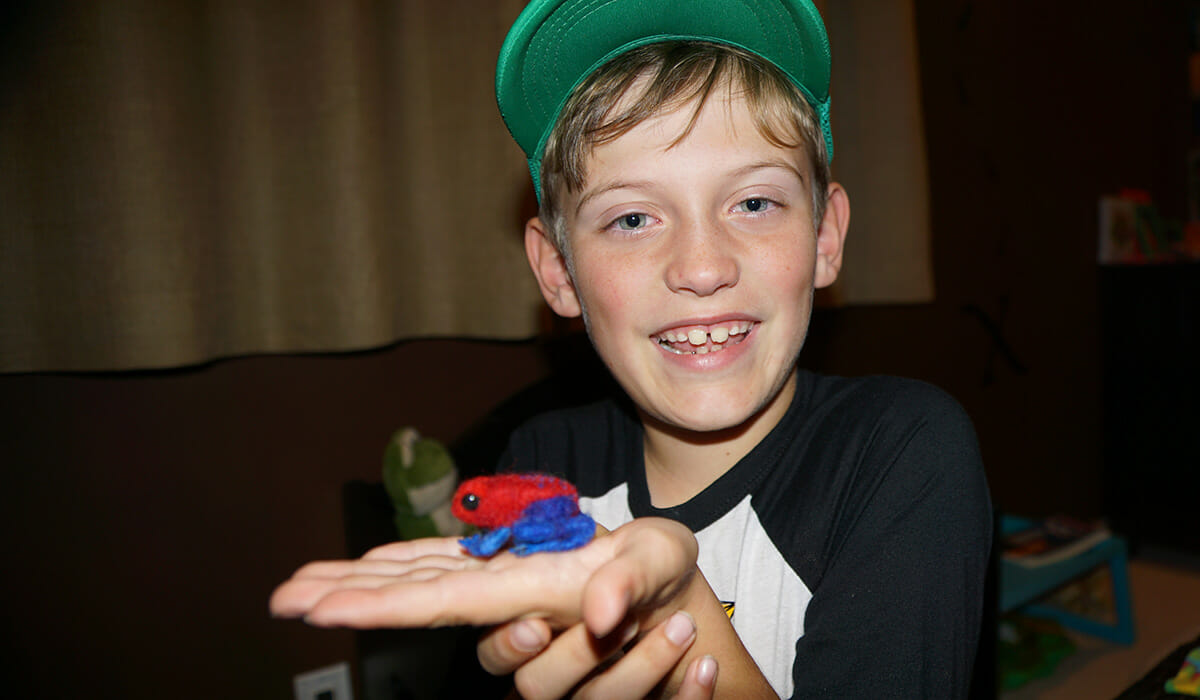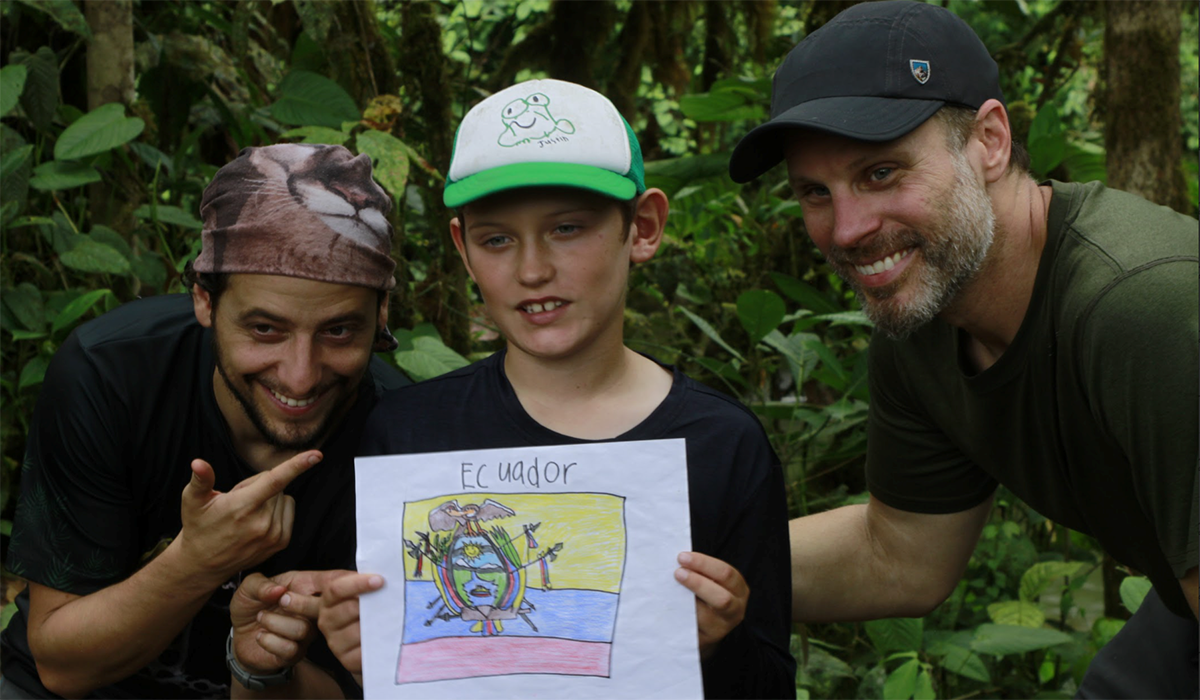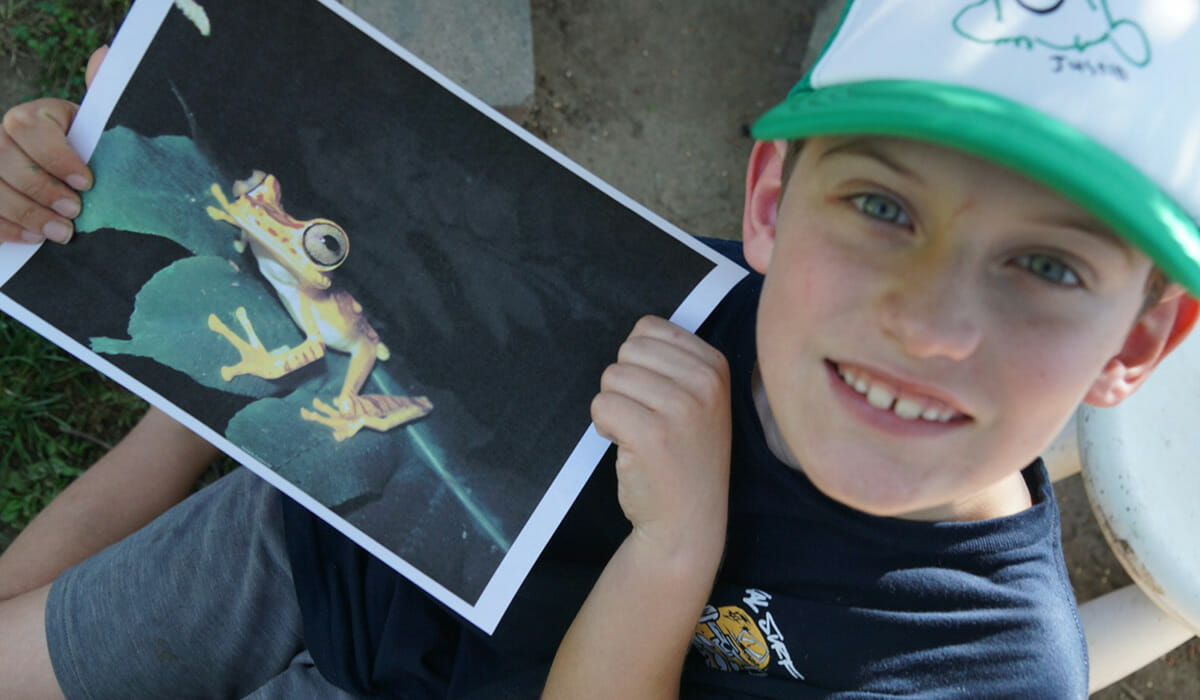Passion for Frogs Inspires Ten-Year-Old to Help Protect the Planet

Meet Daily Point of Light Award honoree Justin Sather. Read his story and nominate an outstanding volunteer or family as a Point of Light.
Justin Sather has had a deep love for frogs since receiving a frog blanket when he was three years old. His passion led him to wanting to help not only the species, but also the entire planet. When he was in only kindergarten, Justin started For the Love of Frogs, an organization whose mission is to conserve 30 percent of the planet by 2030.
For the Love of Frogs raises money to help restore wetlands and help protect rainforests, and also hosts projects related to land conservation and preserving clean water. Now ten-years-old, Justin has raised over $20,000 to conserve land and clean the planet. In partnership with the youth project Reserva, Justin is currently raising money to purchase and protect acres of land in Ecuador’s Choco Rainforest. Last month, he visited Ecuador to see the reserves in person.
Describe your volunteer role with For the Love of Frogs.
I started it. It’s an organization that helps save the frogs. We have people cutting down their homes and plastic pollution. I’m helping with plastic and the rainforest. I also sell toy frogs. The frogs are indicator species so that’s why it’s really helping the rainforest and everything, because the frogs are telling us the planet needs our help. Frogs are indicator species. What that means is if the frogs are dying in an area, like in the water, that means the water is polluted and is bad. Frogs are super sensitive because they can breath and drink through their skin.

What inspired you to start For the Love of Frogs?
I started it in kindergarten. I read this book called What Do You Do With an Idea? [by Kobi Yamada]. It’s about a kid who has an idea and it grows and grows and finally changes the world, and I was like, well I want to have an idea. I always liked frogs since I was three when I got these froggy blankets. I studied all about frogs and I started my project off by selling toy frogs. They’re one dollar for the small ones and five dollars for the big ones. I raised money for Dr. Kerry Kriger [of Save the Frogs] which helped me build ponds. I built three wetlands. I helped build wetlands in the Plumas National Forest to help save the red-legged frogs.
I read that second book called What Do You Do With a Chance?, and I have the chance to work with an organization called Reserva. Reserva is helping the rainforest. I raised 28 acres of rainforest in Ecuador. Almost half of the world’s rainforest have been destroyed and they could disappear in 100 years. A lot of the frogs live in the rainforest. You also can do the Million Letters campaign, which is how you raise money for the rainforest. You raise three dollars for every letter you write and you can help frogs and save land in Ecuador every time you write a letter. When you make a letter, you get a certificate. You need 244 letters to raise one acre, and one acre of land is 730 dollars.
What are your goals with this organization?
To save 30 percent of the planet by 2030. I’m doing Reserva and saving the rainforest. I got to meet Dr. Jane Goodall and she said you’re doing really good, but you have to help work on the plastic because there’s going to be more plastic in the ocean than fish by 2050. So I’m also helping the plastic pollution. I started helping people in Africa and that’s another part of my project, which is called the parallel projects. We get ideas from everyone and we make things out of plastic bottles. We have pen pals in Africa. They have so many bottles in Africa, and in the ocean, all the animals are dying. There’s even a whole river full of plastic bottles. So I started helping people in Africa to get rid of their plastic bottles by teaching kids to use less plastic. We made all these different toys and stuff, like a toy car out of a plastic bottle. We do it here in the U.S. and over in Africa, in Cameroon and Tanzania, they make a toy car too. We go back and forth making different things. Now we want to change laws so you can’t just throw your plastic bottles on the ground because they don’t have any recycling centers near where everyone is. We want to teach kids to use less plastic and to reuse bottles.
Are there any future partnerships, programs, or events that you are excited about?
There’s a book I’m in that just came out and it’s called Young Change Makers: Making a Difference. The book is about all different young kids and people doing things around the world to save nature and to help stop plastic pollution and everything that’s a problem. Also the Million Letters Campaign. The only people who can write letters are 26 and younger. All you have to do on the letter is write your age, name, why you like nature and why you want to protect it. You can also donate to my GoFundMe for more acres of land I will save.
What’s been the most rewarding part of your work?
I liked meeting Dr. Jane Goodall and going to Ecuador. They’re probably the two most rewarding parts, and to be in Bravery Magazine. I’m in the book that Dr. Jane Goodall is in. It’s called Bravery Magazine and it’s about different change makers around the world. It’s cool because the same day I got to meet Dr Jane Goodall, I also got to have the interview for the book.

What do you want people to learn from your story?
I want people to learn to be brave and also have their own project that actually helps change the world. I learned that one idea can help change the world, even if it’s big or small. If you pick up some plastic, that’s still pretty big. I want people who are very young to also have an idea to help save different parts of the planet, like their favorite animal, if it’s sea animals or land animals. I really want all the people to get an idea of how they can actually make their own project and be brave and do their best and not let anyone down and have a growth mindset, which means that if they can’t do it yet, they have to keep on trying new things.
Why do you especially want young people to start their own project to give back?
I think it’s important because they’re really the next generation. … When they start off when they’re younger, they’ll get better and better and finally help change the world. We’re the next generation so we can’t just let everyone else do a project. We have to actually help during the project and help climate change and oceans and rainforests. We want to have rainforests, clean oceans and not have a bad climate. If we don’t stop, by 2050 the whole ocean will have plastic in it. We’re bringing the million letters to the world leaders also to help us. If we have more kids doing the project, the leaders will help. We’re trying to get it to presidents and all different people to try to help save the next generation for all the kids. When they have their own kids, they want them to experience the rainforest or the ocean.
Do you want to make a difference in your community like Justin? Find local volunteer opportunities.
